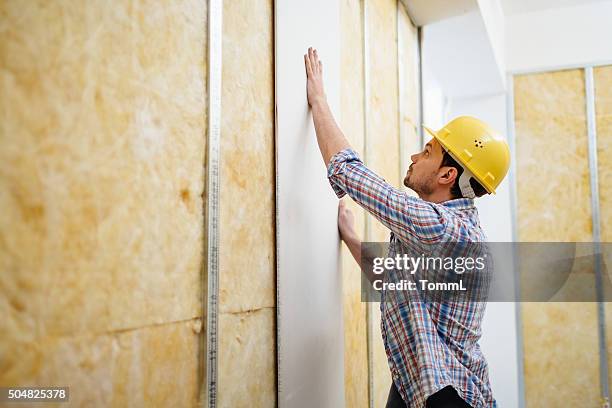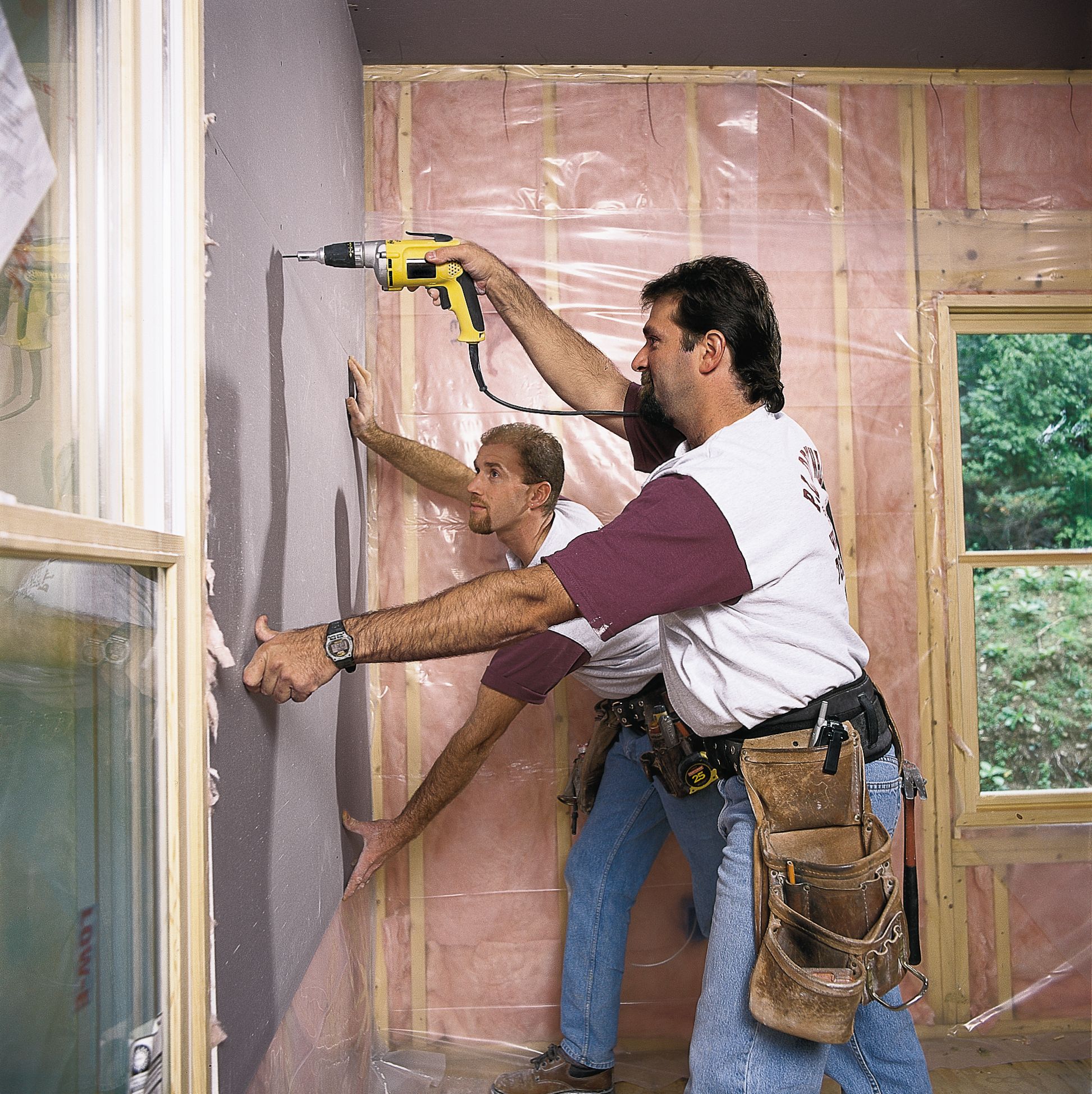Usual Blunders to Stay Clear Of in Drywall Repair Projects
Wiki Article
The Ultimate Step-by-Step Guide to Drywall Installation: From Prep to Paint
Drywall setup is a crucial step in any type of construction or remodelling project, and it needs careful attention to information and precise implementation. From collecting the essential tools and materials to measuring and reducing the drywall panels, we will provide you with clear and concise directions to make certain an effective installment.
Gather Necessary Equipment and Products
To start the drywall installment process, it is important to gather all the needed devices and materials in a professional manner. Having the right tools and materials not just ensures a smooth and reliable installment yet also adds to the overall quality and durability of the finished job.Most importantly, you will certainly require a measuring tape to accurately gauge the dimensions of the ceilings and wall surfaces. This will allow you to reduce the drywall sheets to the appropriate dimension, decreasing waste. An utility knife with sharp blades is critical for accurate and clean cuts (drywall repair). Additionally, a T-square can assist you accomplish straight and square cuts.
Following, you will screw or require a cordless drill weapon to secure the drywall sheets to the studs. See to it to have an adequate number of drywall screws on hand. These screws ought to be long enough to penetrate the drywall and firmly secure it to the studs.
Other necessary devices include a drywall lift or a couple of helping hands to help with positioning and holding the drywall sheets in position. A drywall T-square can be helpful for marking cutting lines, while a rasp or fining sand block will allow you to smooth any kind of harsh sides.
Last but not least, collect all the necessary safety and security equipment, such as safety glasses, handwear covers, and a dirt mask, to shield yourself during the installation procedure.
Prepare the Workspace
Prior to starting the drywall installment procedure, it is essential to appropriately prepare the workplace to make sure a smooth and efficient installment. This action is crucial as it establishes the structure for the entire job, making it possible for the setup to proceed seamlessly.To begin, it is very important to remove the job area of any type of furnishings, decorations, or various other things that may obstruct the installment process. This includes removing wall danglings, covering furniture, and securing the floors with ground cloth or plastic sheets. Additionally, ensure that the location is well-ventilated by opening up windows or using fans to stop the build-up of dirt and fumes.
Next, evaluate the wall surfaces and ceilings for any kind of existing damages or abnormalities. Resolve any concerns such as fractures, holes, or unequal surfaces before proceeding with the setup. This may involve patching up openings, fining sand down harsh locations, or using a skim coat to even out the surface.
Finally, procedure and mark the design of the drywall sheets on the walls and ceilings. This will certainly function as a guide during the setup procedure and aid ensure exact placement of the panels (Edmonton drywallers). Take into account any kind of electrical outlets, switches, or other fixtures that may call for special interest
Measure and Cut the Drywall Panels
Exact cuts and precise dimensions are important when functioning with drywall panels during the installation process. Prior to reducing the drywall, it is critical to gauge the dimensions of the area where the panels will certainly be installed. Utilize a measuring tape to identify the height and width of each area, and see to it to account for any electrical outlets or fixtures that might need custom cuts.When the dimensions are taken, transfer them onto the drywall panels noting or utilizing a pencil device. Confirm the measurements to make sure precision before continuing with the cutting procedure. It is recommended to make use of a T-square or straight edge to create straight lines for cutting.

Keep in mind to put on safety and security goggles and dust masks when reducing drywall to protect yourself from debris (drywall contractors). In addition, it is suggested to have someone help you in holding the panels during the reducing process to ensure security and accuracy
Install and Secure the Drywall Panels
Proper setup and safe accessory of the drywall panels is essential for a successful and long lasting coating. To start, very carefully raise the drywall panel into location, ensuring it lines up with the marked guidelines on the wall. Use a drywall lift or get the help of another person to hold the panel ready while you safeguard it. Beginning with one edge, insert drywall screws right into the panel, driving them via the drywall and into the wall studs. Make certain to area the screws evenly, around every 16 inches along the edges and every 12 inches in the center. It is necessary to stay clear of over-tightening the screws, as this can create the drywall to damage or split. Repeat this procedure for each and every panel, guaranteeing they fit firmly with each other without any voids. When all the panels are installed, evaluate the surface for any kind of protruding blemishes or screws. Utilize a screwdriver or drill to sink any kind of extending screws slightly below the surface area. Apply drywall joint compound to cover the joints between the panels and let it dry entirely before continuing to the next action.
End Up and Repaint the Drywall Surfaces
To attain a expert and sleek coating, the following action after mounting and protecting the drywall panels is to meticulously finish and paint the drywall surface areas. Ending up the drywall entails several steps to make sure a seamless and smooth appearance. First, any noticeable joints or joints in between the drywall panels must be covered with joint substance and tape. This substance is related to the joints, ravelled, and left to dry. When dry, drywall Edmonton it is fined sand down to produce a seamless surface. Next, any type of imperfections or unequal areas on the drywall are loaded with joint compound and sanded down up until smooth. After the drywall is properly finished, it is time to repaint. Prior to paint, it is vital to prime the drywall surface areas to ensure appropriate bond and a smooth finish. Once the guide is dry, the drywall can be painted using a roller or brush, relying on the desired finish. Multiple layers might be required to attain the wanted shade and insurance coverage. It is very important to allow each layer to completely dry prior to using the next. Once the paint is completely dry, the drywall surface areas are prepared to be taken pleasure in.Verdict

From collecting the essential tools and materials to measuring and reducing the drywall panels, we will certainly give you with clear and concise guidelines to guarantee a successful installment.Exact cuts and exact measurements are crucial when working with drywall panels during the installation procedure.Correct installment and safe and secure attachment of the drywall panels is essential for a successful and resilient surface. Beginning from one edge, insert drywall screws right into the panel, driving them with the drywall and right into the wall surface studs.To attain a specialist and polished finish, the following action after setting up and protecting the drywall panels is to meticulously end up and repaint the drywall surfaces.
Report this wiki page